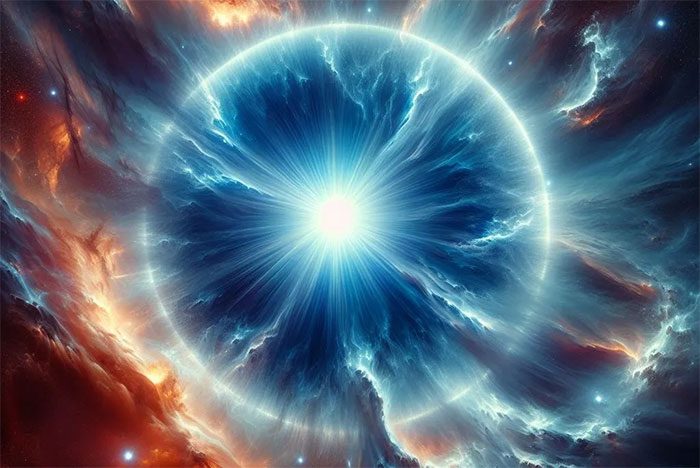Spanish scientists have unveiled the mystery behind the origins of the universe’s “monsters” – the blue supergiant stars.
According to Space.com, a research team led by the Institute of Astrophysics of the Canary Islands (IAC – Spain) has found clues indicating that these “monster” blue supergiant stars are formed when two stars in a binary system spiral together and merge.
Blue supergiant stars are classified as B-type stars, shining at least 10,000 times brighter, hotter by 2-5 times, and weighing 16-40 times more than our Sun.

“Monsters” blue supergiant stars can be born from the merger of two stars – (Graphic illustration).
In the universe, the hotter a star is, the more it appears blue. Conversely, “cooler” stars appear whiter; those that are even cooler take on yellow and orange hues…
The coolest type of stars are red dwarfs, not counting the “failed stars” known as brown dwarfs – objects that lie between the state of a star and a planet.
Our Sun is a G-type yellow star, which means it has average brightness and temperature.
Therefore, one can imagine blue supergiant stars as an extremely extreme type of star. Massive and fiery, yet they are also short-lived: They grow rapidly and fade quickly.
For many years, the puzzle of how these extreme monsters are born remained unsolved.
According to the newly proven model, scientists have focused on an inconsistency in the nature of blue supergiant stars: Heavier stars should have a higher likelihood of having companions, yet these monsters are often solitary.
Thus, the most reasonable explanation is: They are the result of a merger.
By analyzing 59 blue supergiant stars from the Large Magellanic Cloud, a satellite galaxy of the Milky Way where Earth resides, scientists have reconstructed the life cycle of these cosmic monsters.
“We simulated the merger of evolved giant stars with smaller companions using various parameters, considering the interactions and mixing of the two stars during the merger process,” said lead author Athira Menon from IAC.
The stars born from this merger began their new life at a very rapid pace, achieving significant success in surface regeneration.
The new findings could represent a major step in solving the remaining puzzles related to these extreme cosmic monsters, as well as their fate after exhausting their energy and dying, potentially forming neutron stars or black holes.


















































